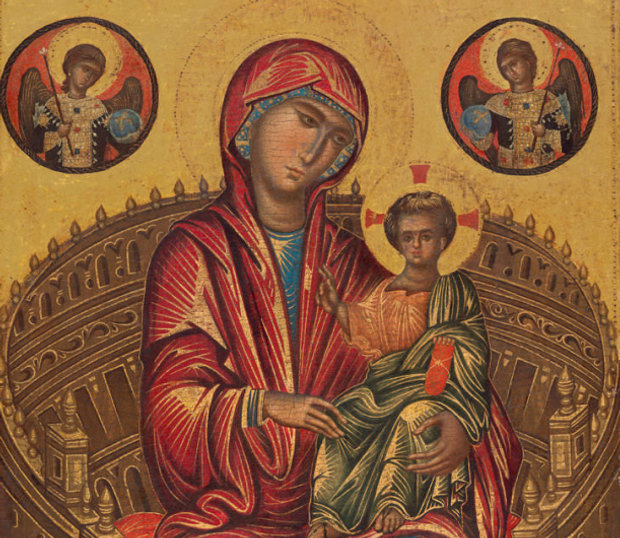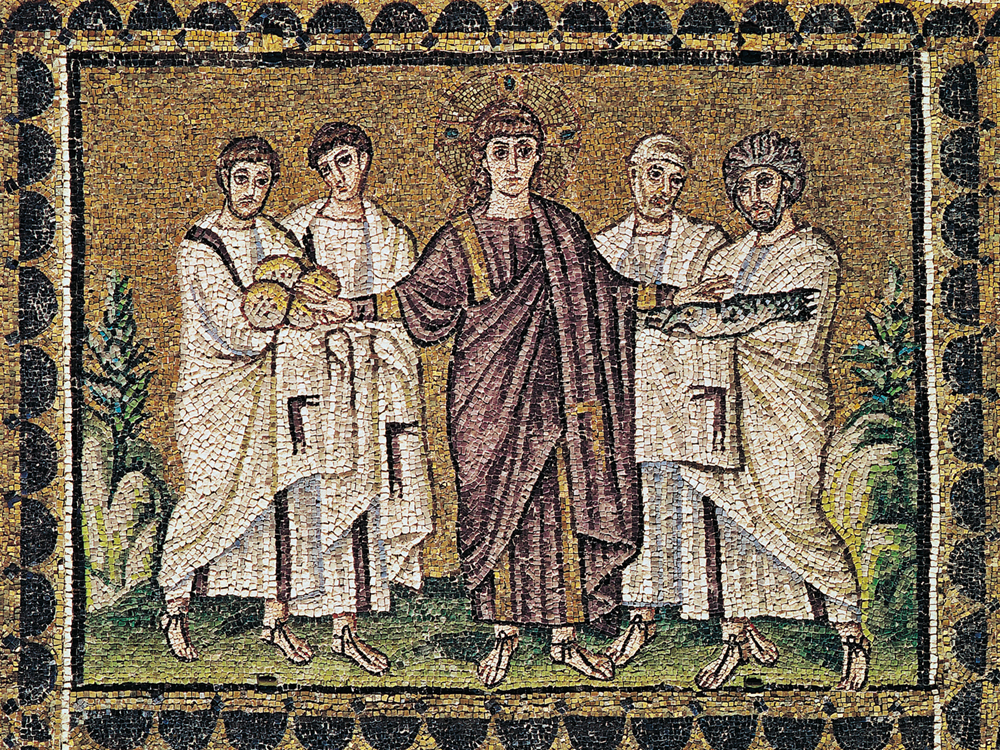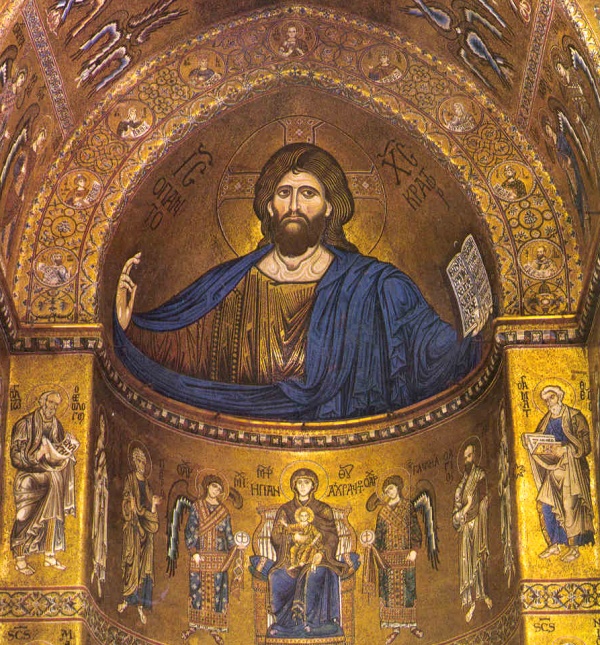
Gombrich Explains Christian Iconography
The art historian charts the primitive and sophisticated methods that created Christian imagery
It’s hard to imagine Christmas without the church and all its attendant glory. Yet, as EH Gombrich makes clear in the best-selling art book of all time, The Story of Art, up until Emperor Constantine established the Christian Church as a power within the State in 311 AD, Christ’s followers were wise to favour, inconspicuous, unadorned sites of worship. So, how did the early imagery we associate with Christianity develop? Somewhat haphazardly, as Gombrich explains.
From its earliest days, Christian artists favoured a certain clarity and simplicity over faithful imitation, and so some of the beautiful verisimilitude of Greek and Roman art was not so highly prized by the early church.

Indeed, Christians did not feel their services were suited to Greek and Roman Pagan temples, and, once accepted within the Empire, chose to worship in “the type of large assembly halls which had been known in classical times under the name ‘basilicas’, which means roughly ‘royal halls,’” Gombrich writes.
To distinguish these new places from pagan shrines, the early church broke away from certain theological conventions of that time. “To place a figure of God, or one of His saints, on the altar seemed altogether out of the question,” Gombrich explains. “For how would the poor pagans who had just been converted to the new faith grasp the difference between their old beliefs and the new message, if they saw such statues in churches?”
However, while idolatry was not tolerated, “some thought paintings were useful because they helped remind the congregation of the teachings they had received, and kept the memory of these sacred episodes alive.”
This emphasis on storytelling and didactic art informed the very nature of the works created. If this picture was to be truly pious, Gombrich explains, “the story had to be told as clearly and simply as possible and anything that might divert attention from this main and sacred aim should be omitted.”
Hence the revival of simple, earlier forms. “Egyptian ideas about the importance of clarity in the representation of all objects returned with great force because of the stress which the Church laid on clarity,” the author notes.
Christian artists did not try to mimic human figures or the natural world as closely as their Greek and Roman counterparts did, yet earlier classical developments, such as the true way to depict folds in a cloth gown, were not fully forgotten, and so “Christian art became a curious mix of primitive and sophisticated methods.”

Even this was too much for some within the Eastern half of the Roman Empire, and in 754, the iconoclasts or image-smashers gained control, forbidding religious art throughout this part of Christendom.
Their opponents took an equally extreme view, regarding religious images as intrinsically holy, as Gombrich explains: “’If God in His mercy could decide to reveal Himself to mortal eyes in the human nature of Christ,’ they argued, ‘why should He not also be willing to manifest Himself in visible images? We do not worship these images as the pagans did. We worship God and the Saints through or across their images.’”
Their argument eventually won out, and, when religious imagery returned to the Eastern Church, about a century after the iconoclasts’ first triumph, “they were no longer regarded as mere illustrations for the use of those who could not read,” Gombrich explains. “They were looked upon as mysterious reflections of the supernatural world.”
We can all appreciate this solemn sense of mystery when we look at the latter-day icons, common in Greek and Russian orthodox Christian worship today. However, with the help of Gombrich, perhaps this Christmas, we might also make out the traces of earlier, Greek, Roman and Egyptian traditions, behind Jesus and Mary’s pious eyes.
For greater insight into this period, buy a copy of The Glory of Byzantium and Early Christendom, and for further grounding on artistic endeavour throughout the ages, buy a copy of The Story of Art here.